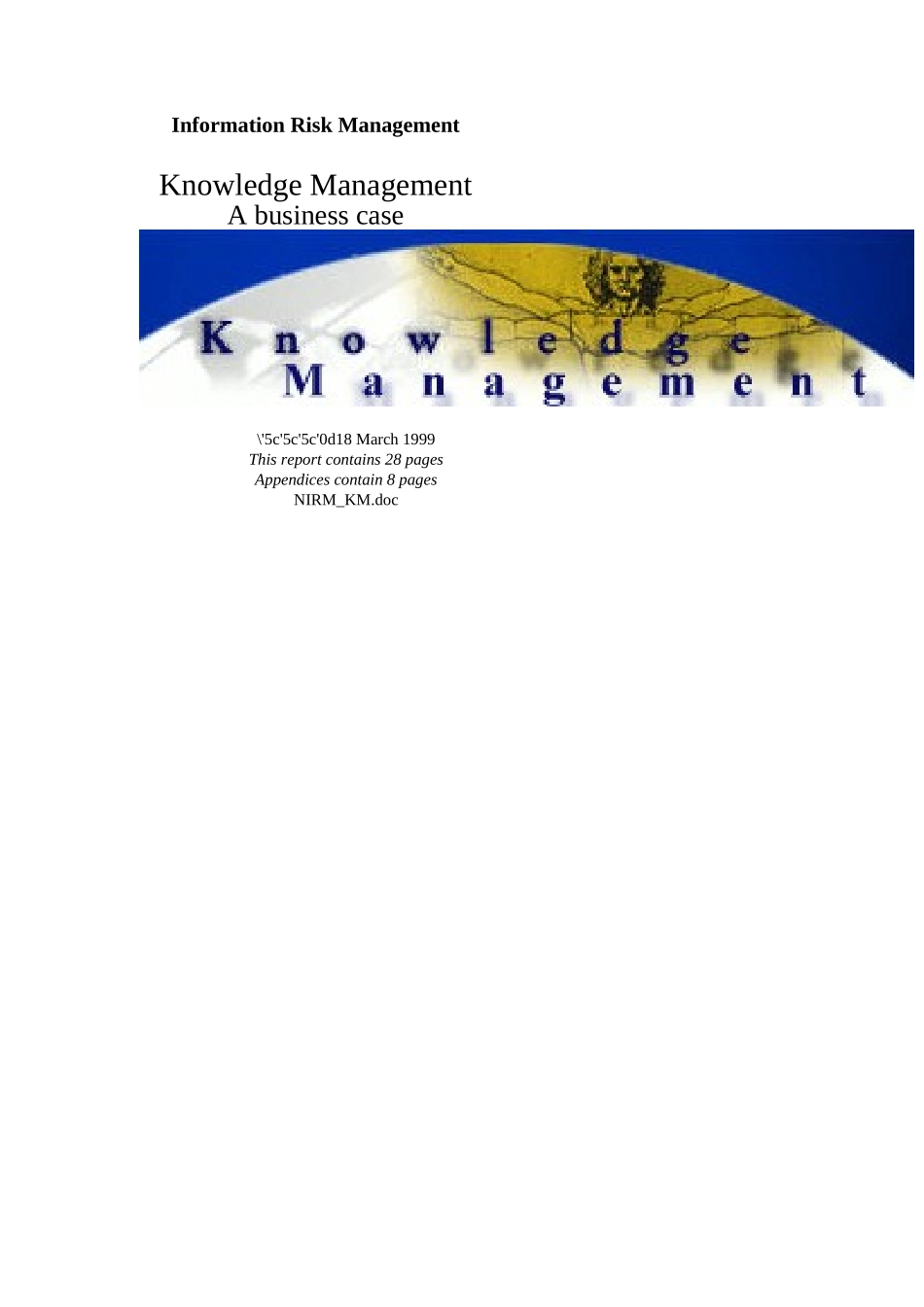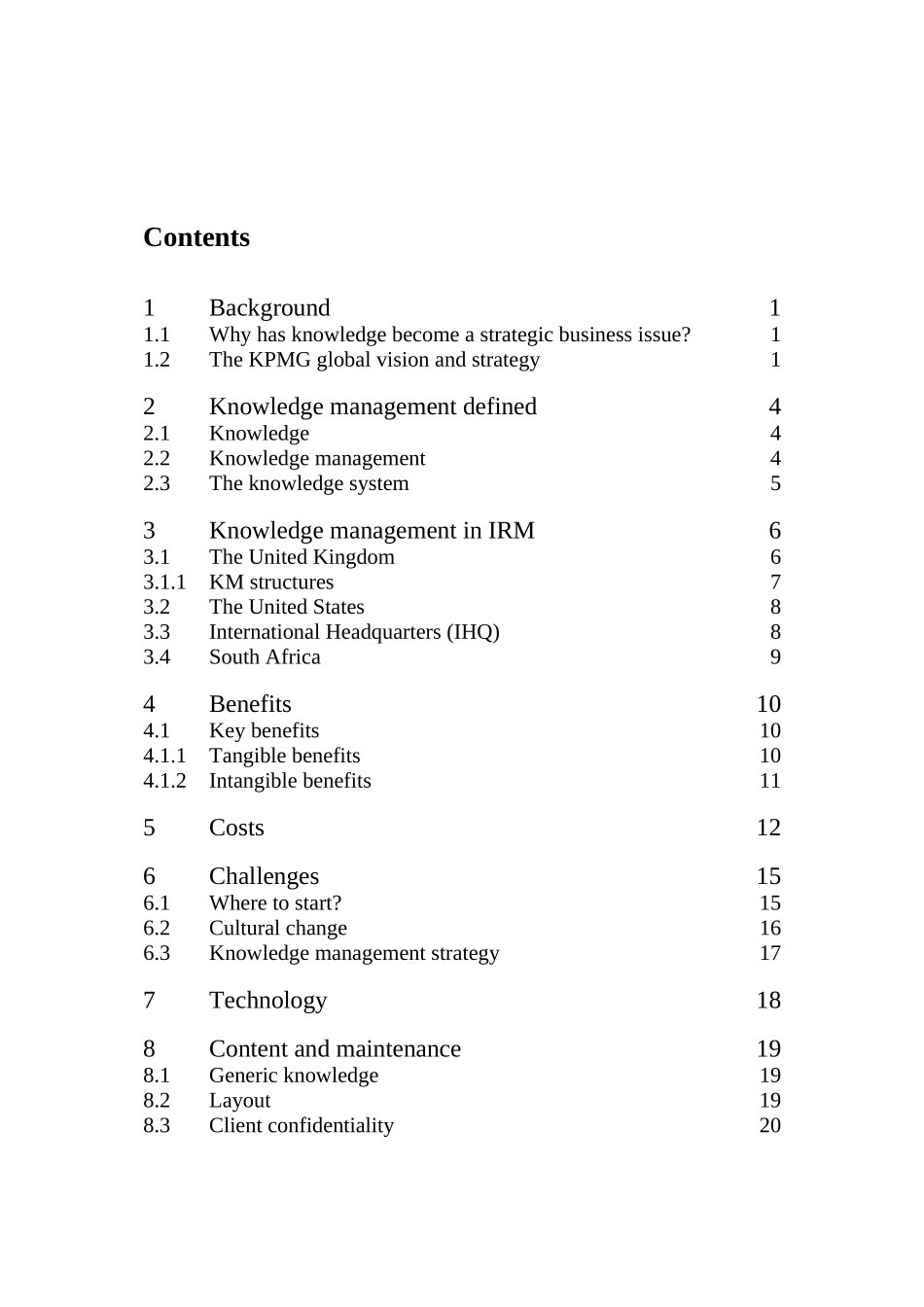Information Risk ManagementKnowledge ManagementA business case\'5c'5c'5c'0d18 March 1999This report contains 28 pagesAppendices contain 8 pagesNIRM_KM.docContents1Background11.1Why has knowledge become a strategic business issue?11.2The KPMG global vision and strategy12Knowledge management defined42.1Knowledge42.2Knowledge management42.3The knowledge system53Knowledge management in IRM63.1The United Kingdom63.1.1KM structures73.2The United States83.3International Headquarters (IHQ)83.4South Africa94Benefits104.1Key benefits104.1.1Tangible benefits104.1.2Intangible benefits115Costs126Challenges156.1Where to start?156.2Cultural change166.3Knowledge management strategy177Technology188Content and maintenance198.1Generic knowledge198.2Layout198.3Client confidentiality208.4Maintenance and sanitation218.5A complete process219The next steps23Appendix A - Suggested IRM South Africa knowledge repository structure24Appendix B - Draft job descriptions for staffing of a Knowledge Centre261Background1.1Why has knowledge become a strategic business issue?Recently there has been a shift away from a “capital asset” based economy to one where the strategic assets of any organisation are its knowledge assets. This change in paradigm is as great as the shift in the past from an agricultural to an industrial-based economy at the start of the Industrial Revolution.The use of knowledge, and its subsequent management, as a strategic tool to enable firms to gain an edge over their competitors has been enabled through: technological advancements allowing the capture, management and dissemination of vast quantities of information within organisations; the emergence of “virtual organisations” in which traditional boundaries separating business units are blurring; and knowledge being util...


